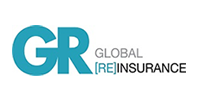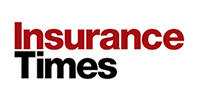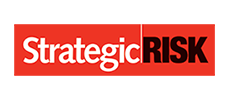Access Provider: See ISP (Internet Service Provider)
Address: A unique identifier for a computer or site online, usually a URL for a website or marked with an @ for an email address. Essentially, it is how your computer finds a location on the internet.
ADSL (Asymmetrical Digital Subscriber Line): A new technology that facilitates the transmission of digital data over ordinary telecommunications lines designed to carry analogue signals. This is the technology used for video-on-demand over standard phone lines.
Analogue: One of the two types of signals, the other being digital, that phones receive and understand.
Anchor: It could be a word, phrase or graphic image that is underlined, highlighted or "clickable", and able to link to another area in the world wide web.
Applet: An application program written in Java that allows viewing of simple animation on web pages.
Asynchronous Transfer Mode (ATM): This is the internationally agreed basis for broadband ISDN. ATM technology enables all types of information including voice, data and video to be transported by a single network infrastructure.
Bandwidth: How much stuff you can send through a connection. Usually measured in bits per second.
Bookmarks: Netscape Navigator's file for holding your favourite web sites. bookmarks provide a shortcut to an address (URL) on the net. With Internet Explorer bookmarks are known as "favourites".
Boot up: Turning on your computer.
Browser: A client software program used to look at various kinds of internet resources, eg. Internet Explorer, Netscape Navigator.
Bytes: A binary "word" or unit of information usually consisting of eight bits.
Cache: Whenever you visit a web page, text and graphical information from the page is downloaded to a storage file in your computer called the cache.
Chat: Allows live conversations or messages to be exchanged as they are typed. Unlike email, chat is not subject to delays between sending and receipt.
Cookie: A small file sent to your computer by the website you have visited. The next time you return to the site, it will remember your user name for example.
D-Channel: This is a term used to describe one of the channels of ISDN. In primary rate ISDN, there are 30 independent 64 kbps information channels known as B-Channels (or bearer channels). In addition, there is a 16 kbps signalling D-channel that is provided for the communication between the terminal and the exchange. It is used to set up and clear calls for all 30 of the information B-channels.
Digitalization: This is the process of converting information from analogue form into digital form.
DNS (Domain Naming System): A system used on the internet for translating names of networks (devices) into IP addresses.
Domain Names: The unique name that identifies an internet site.
Domain: A domain tells you what kind of organisation you are dealing with. Examples include:
.co.uk - UK, commercial
.com - commercial
.ac.uk -UK, educational
.org.uk - UK, non-profit organisation
.org - non-profit organisation
.uk.limited - UK, limited company
Download: Retrieving a file from a host computer (server) onto your computer.
Drill Down: This term relates to the practice of clicking further into a website to more in-depth information.
Email (Electronic mail): Messages (usually text) sent from one person to another via computer. Email can also be automatically sent to a large number of addresses, eg. to a mailing list. Attachments (additional text and graphics) can be included with emails and sent from computer to computer.
Emoticons: A means of expressing emotions over the internet, eg. :- ) for a smilie, ;- ) for a wink (light sarcasm) or :- D to express shock and surprise - the list goes on.
Ethernet: A way of transmitting data from one computer to another.
Extranet: A private network that is used to share part of a business's information with suppliers and partners.
File Server: A networked computer used for file storage and distribution to other devices on a network.
Files: Anything that is stored on your computer; could be text, images and sound.
Filter: A device that allows a certain range of frequencies to pass while suppressing unwanted frequencies or noise, or separating channels in communication circuits.
Finger: A program that displays information about someone on the internet.
Firewall: A combination of hardware and software that separates a LAN (Local Area Network) into two or more parts for security purposes.
Flash: A lot of designers are using Flash to make their websites look cool, but this isn't as widely used as people believe.
FTP (File Transfer Protocol): This is a very common method of moving files between two Internet sites. FTP is a special way to log into another internet site for the purposes of retrieving and/or sending files.
Gateway: This is a facility that adapts signals and messages of one network to the protocols and conventions of other networks or services.
Hit: The record of a user's visits to a homepage. One hit equals one visit.
Homepage: A document produced using HTML (See HTML) code with links to the web.
Host: Any computer on a network that is a repository for services available to other computers on the network.
HTML (Hyper Text Mark-up Language): The coding language used to create documents for use on the web, whereby a block of text or a word is linked to another file on the internet. HTML files are supposed to be viewed using a web client program, such as Netscape Navigator or Internet Explorer.
Hyperlink: Key words or symbols that provide links to parts of the same document or to other documents written in HTML.
Icon: An image on your screen that acts as an operating button. Once you click or double click on the icon, you activate its function.
Intranet: This is like the internet except it is private. Many companies have their own intranets that allow employees to access internal company websites.
IP addresses: Sometimes called a dotted quad, every machine on the internet has a unique IP number for address purposes (eg 123.456.789.123).
ISDN (Integrated Digital Services Network): ISDN lines offer high-speed dial-up connections to the internet which are much faster than dialling up over an ordinary phone line.
ISP (Internet Service Providers): Also known as Access Providers, ISPs are businesses that provide individuals and companies with access to the internet. The services often include a dial-in interface with the internet, software supply and sometimes website and intranet design.
Java: A computer programming language whose programs can run on a number of different types of computer and/or operating systems.
JPEG or JPG (Joint Photographic Experts Group): A JPEG is a graphics format that is newer than GIF and is able to display photographs and graphics in millions of colours. Because JPEG files compress well, they can be downloaded and transferred over the internet relatively quickly.
Kbit/s: Bit is short for Binary digIT and this is the smallest unit of computer data. Modem speed is usually measured in kbit/s so the higher this is, the faster your modem.
Mail server: A networked computer that is responsible for holding and transferring electronic mail between users.
Mailing list: Online, a mailing list is an automatically distributed email message on particular topics going to certain individuals. You can subscribe and unsubscribe to mailing lists by sending a message via email.
MB (Megabyte): Measure of hard space equal to 1,048, 576 bytes.
Microbrowsers: A cut-down version of an internet browser (such as Netscape Navigator, Internet Explorer) which is designed to run on a range of Palm Size PCs and Hand Held PCs.
Modem: A modem, which is an abbreviation of modulator/ demodulator, is an electronic device that converts computer data into a form that can be transmitted over a standard telephone line and vice versa. The conversion is necessary, as telephone lines are only able to transmit analogue signals whereas computers process information digitally.
Network: Any time you connect two or more computers so they can share resources you have created a network. Connect two networks and you have an internet.
Newbie: A person that is new to the internet.
Newsgroups: The name for discussion groups on usenet
Node: A single computer connected to a network.
Optimization: Changes made to a web page to improve the positioning of that page with one or more search engines.
Portal site: A generic term for any site that provides an entry point to the internet for a significant number of users.
Premium channels: This term is used to describe channels which viewers subscribe to as an add-on to the basic service for which they pay a premium.
Plug-in: A software program that extends the functionality of your browser, eg. extra capability to view video files. They are often found on websites and are cheap or free to use.
Protocol: The set of rules and conventions that govern how networks exchange information.
RAM (Random Access Memory): The memory in which applications such as Word and Excel are run.
Router: A router is used to connect two or more dissimilar networks, which may be LANs, WANs or a mixture of both.
Search engine: Sophisticated indexing services that organise lists of home pages according to subject, such as Yahoo.
Server: A combination of hardware and software capable of recognising and responding to client requests for services such as shared access to a file system, a printer, or an electronic mail system, to a local area network (LAN) users or clients.
Shareware: Software programs that are openly available and can usually be downloaded online.
Spam: The practice of using mailing lists to blanket private email addresses with indiscriminate advertising messages.
Splash Page: Splash pages are replacing many homepages - particularly on sites more involved with news and publishing - as gateways into web content.
Spidering: The process of surfing the web, storing URLs and indexing keywords, links and text.
Terminal: A device that allows you to send commands to a computer somewhere else.
Traffic: The visitors to a web page or website.
Virus: These are programs that can be downloaded unknowingly onto your computer or network from the internet. While some are harmless, others are programmed to destroy your system, ruin your files and disable your software.




































